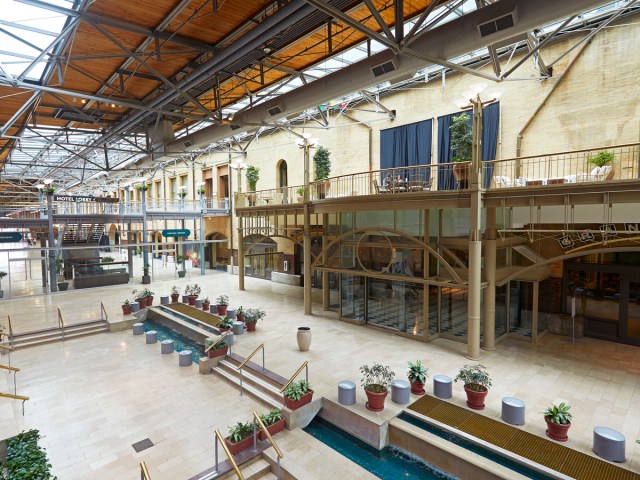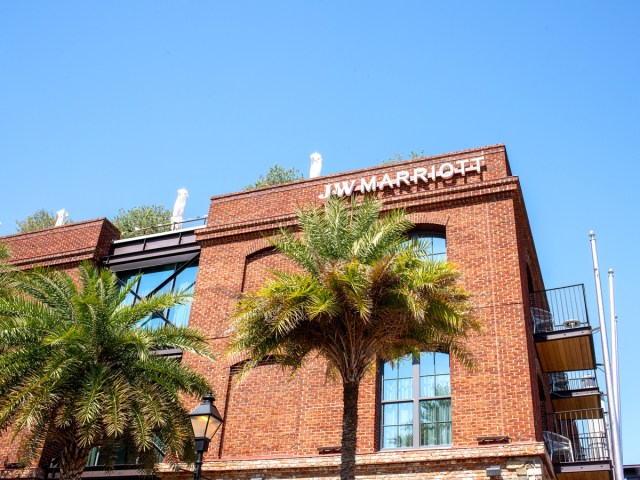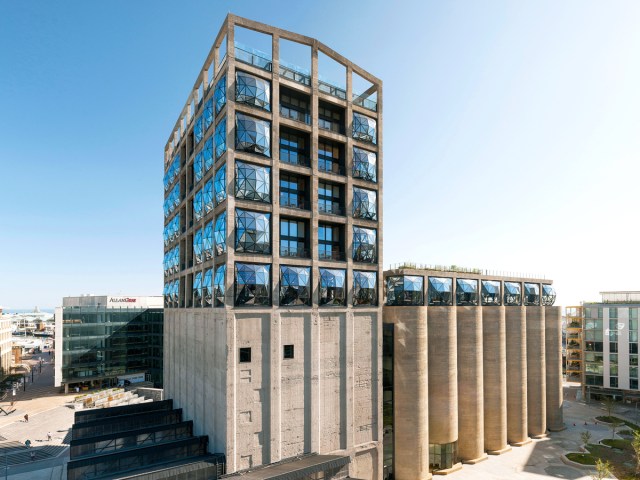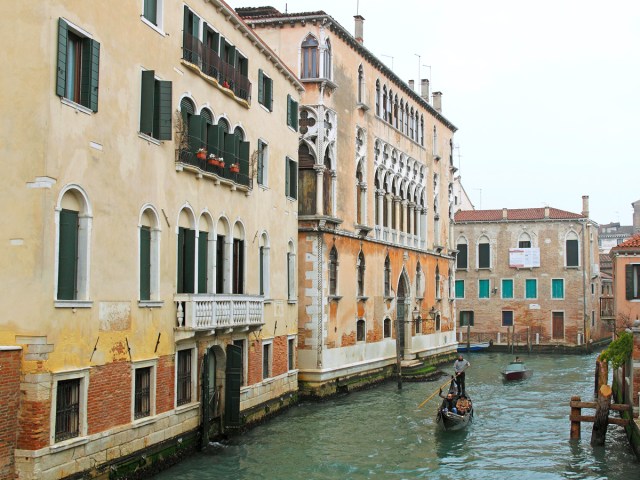Over time, buildings may outlive their usefulness, at least as far as their original function is concerned. Yet, while some fall victim to the wrecking ball, others are cherished enough to be deemed worth saving. And in some cases, they enjoy a new lease on life as visitor accommodations. Around the world, it’s possible to stay the night in properties that started out as magnificent palaces, grand offices, factories, power plants, warehouses, and even railway stations. Take a look at six of the most interesting historic buildings around the world reborn as hotels.
The OWO (Old War Office) – London, England

The Old War Office on London’s historic Whitehall street was commissioned by the British government in the late 19th century to replace an existing building that was no longer considered fit for purpose. Completed in 1906, the resulting Edwardian Baroque-style property was a triumph, with its imposing Portland stone façade. It remained in use throughout the 20th century and was a place of work for influential statesmen such as Lord Kitchener, T.E. Lawrence (better known as Lawrence of Arabia), Sir Winston Churchill, and David Lloyd George.
However, the Ministry of Defence moved out in the 1960s, and the building was sold in 2014. Today, after an extensive and exquisite refit, it’s been reimagined as the OWO, home to Raffles London. The Whitehall location is just as convenient for visiting travelers as it was for those who worked here on matters of national security.
St. Louis Union Station Hotel – St. Louis, Missouri

On September 1, 1894, history was made in St. Louis as the city’s new train station welcomed its first passengers. At the time, it was the largest single-level railway station in the world, with a train shed large enough to cover 32 parallel train tracks and a beautiful vaulted waiting room decorated with frescoes, gold leaf, mosaic floors, and stained glass windows. At its peak during World War II, an estimated 100,000 people passed through the station each day.
However, the rise of the automobile signaled the end of the station’s heyday. The site was redeveloped in the 1980s, and these days the building is home to a stylish hotel, part of the Curio Collection by Hilton. The property is within a wider entertainment complex featuring the St. Louis Aquarium and the St. Louis Wheel.
JW Marriott Savannah Plant Riverside District – Savannah, Georgia

This landmark hotel started life in 1912 with a very different purpose. It was constructed as a power plant for the Savannah Power Company, which sold electricity to the Savannah Electric Company until 1921, when the two companies merged to create the Savannah Electric and Power Company. Its waterfront location and 176-foot-tall smokestacks made the plant a prominent city landmark known as Riverside Station.
In 2005, the plant was decommissioned; seven years later, a local entrepreneur named Richard Kessler bought the site to transform it into a hotel and leisure complex called Plant Riverside. The JW Marriott Savannah Plant Riverside District welcomed its first guests in 2020, with the former power plant retained as its centerpiece.
Silo Hotel – Cape Town, South Africa

The Silo Hotel’s story began a little over a century ago, when grain silos and an elevator tower were built at a dock in 1921 on what’s now the V&A Waterfront in Cape Town. Back then, the area’s rural hinterland was an important arable farming area, and the agricultural produce that was stored here was loaded onto boats and eventually made its way to Europe. Standing 187 feet tall and painted a bright shade of yellow, the structure was clearly visible from land and sea.
However, times changed, and the building became redundant by the early part of the 21st century. British architect Thomas Heatherwick devised an ambitious plan to turn the former silo into an art gallery and hotel. The Silo Hotel opened in 2017, along with the contemporary art museum Zeitz MOCAA. Its distinctive architecture boasts a lofty atrium that evokes the sense of being inside a giant honeycomb, with skylights and pillow windows that flood the space with light.
Fairmont Heritage Place, Ghirardelli Square – San Francisco, California

Italian-born Domenico “Domingo” Ghirardelli opened his first candy store in California in 1849 and founded the Ghirardelli Chocolate Company three years later. It was a resounding success — so much so that, in 1893, the company consolidated its operations by taking over the Pioneer Woolen Mills factory.
In the 1960s, Ghirardelli production relocated to San Leandro, and the square that bore its Italian founder’s name was repurposed for retail and hospitality. In 2008, Fairmont unveiled a luxury all-suite hotel and residences on the upper floors of the former factory. Now, you can book in for a short or longer stay (or purchase a fractional ownership in a residence) and experience a place that’s a key part of the city’s heritage.
Palazzo Donà Giovannelli – Venice, Italy

Italy is brimming with crumbling palaces, and nowhere is this perhaps more evident than in Venice. As the city’s most historic buildings struggle not to sink into a watery grave, tourism can provide a lifeline. That’s certainly the case with Palazzo Donà Giovannelli, built in 1436 in the Cannaregio district.
The property is currently undergoing extensive renovations with plans for it to open as an Orient Express hotel in 2026. It will boast 47 sumptuous rooms and suites befitting of its original status, seamlessly blending Baroque, neoclassical, and Gothic styles. However, some of the architectural details you see — such as a lavish octagonal staircase, colorful frescoes, and a Murano glass chandelier — aren’t as old as you might think. They were added in the 19th century.
More from our network
Daily Passport is part of Inbox Studio, which publishes content that uplifts, informs, and inspires.
















